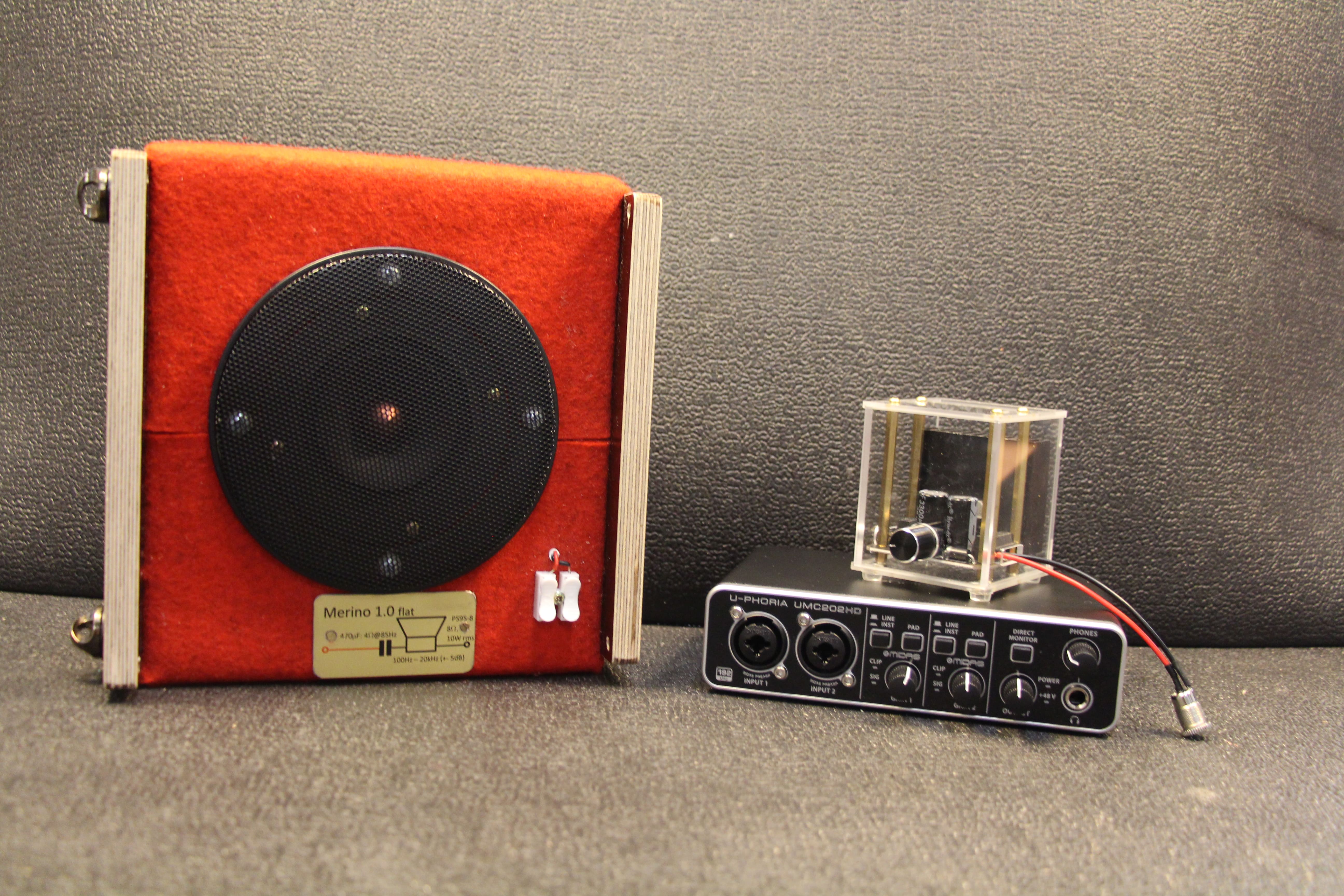The ICIR Corpus
 |
||
| Contents: | ||
The ICIR Corpus is a database which provides a variety of impulse responses. These impulse responses were measured inside of different cars and can be used for several applications like handsfree or in-car communication systems. There are already some databases available which also provide such impulse responses, but we were using several generalisations for our measurements. Instead of using the built-in handsfree microphones we are using standard speech microphones which are widely available and affordable too. They are also small so they can be placed nearly everywhere in the car. We also avoided using the installed car speakers because their characteristics would differ from car to car. Instead, a small, separate loudspeaker box is used which can be positioned at any reasonable place. Currently the loudspeaker box is self-made with wood and fleece but in the future a 3D-printed housing shall be used. For a more detailed description of the parts used please refer to the Setup site.
The data base does not contain the impulse responses directly. It rather provides the measurement noise files of the input (loudspeaker) and the output (microphone) at a fixed sampling rate of 48 kHz. If the user needs a lower sampling rate the database also provides MATLAB scripts for resampling the data to a desired value. After doing this the user can use another MATLAB program from the database to estimate the impulse responses. This way the most possible information is kept inside the noise measurement files and the user could finally adjust the analysis.
File Name Conventions
We use the following convention for file names, combined always from pairs of numbers and digits:
|
Dep
|
Department |
Always two letters - example: Kiel University |
|
Car
|
Car type |
One small letter and one digit - example: c1 = car, number |
|
Ch
|
Number of channels |
Mono: Ch = 1, Stereo: Ch = 2, Multichannel: Ch > 2 |
|
Mc
|
Microphone index |
00 to 99 |
|
Sp
|
Speaker index |
00 to 99 |
|
Type
|
Type of measurement |
Impulse response estimation: imp |
|
Measurement noise, e.g. pink noise: pn |
||
|
Road noise, e.g. 60 km/h or 120 km/h: r06/ r12 |
||
|
Fan noise: f |
||
|
Speech: s |
Example:
KUc12_1103_imp.wav
Multichannel Recordings
The standard for impulse response estimation is a stereo recording, whereas a mono recording for noise and speech is sufficient. A dual channel audio interface is appropriate. The microphone is connected to channel 1 (left) and the loudspeaker to channel 2 (right). The suited road noise, fan noise and speech are for single microphone applications. For microphone arrays these noises require a multichannel recording. For a microphone array stereo recordings with two or more microphones could be used, while the impulse responses are being measured successively. Stereo noise or speech recordings fit for a dual channel array, but arrays with more than two microphones require the corresponding multi-channel audio interface. As already mentioned above, the number of channels is denoted within the filename.
The audio files should be saved depending on the number of microphones as shown below:
| Channel → | 1 | 2 | 3 | 4 | ... | Type ↓ |
|---|---|---|---|---|---|---|
| Single microphone | mic mic |
spk |
|
|
|
Impulse response measurement file Noise/ speech file |
| Microphone array | mic1 mic1 |
spk mic2 |
mic2 mic3 |
mic3 mic4 |
... ... |
Impulse response mearuement file Noise/ speech file |
Database Structure
The sampling rate and file format is fixed to 48 kHz and the well-kwon .wav format. The data is being stored in a directory called data48. In the table down below the database structure can be seen.
| user48, user44, ... | resampled 'noise' from data48 and estimated impulse responses |
| MAT | MATLAB support programs |
| docu | documentation and datasheets |
| raw48 | work directory for standard recordings with 48 kHz |
| raw96 | work directory in case recording was done with 96 kHz |
Speech and Road Noise Signals
A small amount of road noise and speech recordings are also being provided in the database. As a small speech data reference we provide two english and one german phonetically balanced sentence of a male speaker recorded in an acoustically ‘dry’ environment (-3 dB full scale):
- _male_CDk_48kHz_3dB_dry.wav
- _male_CDk_48kHz_3dB_dry.wav
- _male_RRk_48kHz_3dB_dry.wav
These dry recordings need to be convolved with one of the estimated impulse responses from the data base - in our case the response from the speaker dummy head (loudspeaker) to the microphone, respectively. For road noise or other car noise the data base will contain some examples, measured with the car installed microphones, according the file name conventions shown above.
Calibration of the Microphone Recordings
Standard is to use no calibration. The recoding interface has a user adjustable gain knob and thus the knob position may ‘always’ give another value.
We provide the calibration of the microphone recordings as an option. To establish this, we need a sound level meter showing the level in dB(A) (best in the mode slow, to simplify capturing and reading the measurement value). The calibration signal should be ‘any’ stationary wideband signal, i.e. we use a situation with ‘constant’ road noise or we play a noise from the loudspeaker (e.g. pink noise). The level value in dBA is noted in the file name together with a calibration series number, e.g. measuring 72dBA (rounded) and giving this series the number 01:
KU01_dBA72.wav
All recordings with this same series number are recorded without any change of the channel chain settings. This way in the later offline data processing we will use e.g. file KU01_dBA72.wav to calculate its dBA value and determine the calibration gain needed to bring this value to 72dBA. This calibration gain may now be applied to all recordings of the same series.
Involved Programs
The document Sample Rate Conversion & Impulse Response Estimation describes the estimation procedure and lists the MATLAB programs.

 On behalf of the members of the Chair of Digital Signal Processing and System Theory, we would like to take this opportunity to wish you all a very Merry Christmas and a peaceful, restful winter break. We hope that this festive season brings you joy, relaxation, and cherished moments with your loved ones.
On behalf of the members of the Chair of Digital Signal Processing and System Theory, we would like to take this opportunity to wish you all a very Merry Christmas and a peaceful, restful winter break. We hope that this festive season brings you joy, relaxation, and cherished moments with your loved ones.